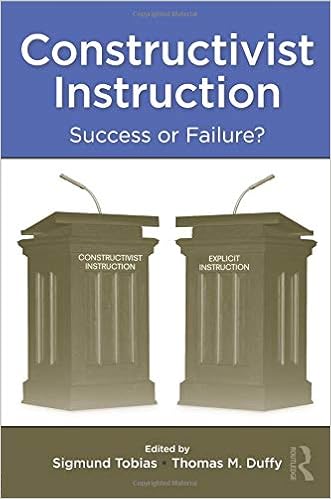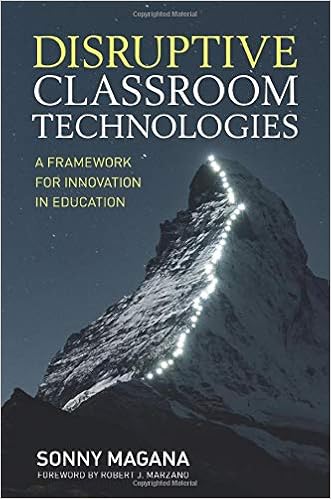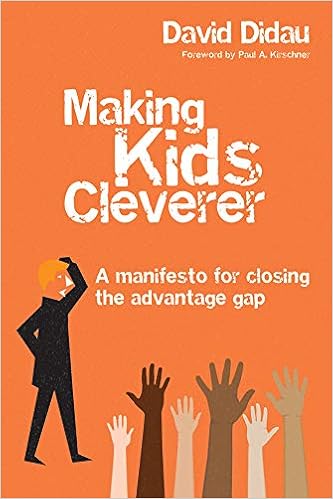I love professional book clubs. If schools are serious about teacher agency and differentiating professional learning for teachers, administrators should consider teacher book clubs as an option. The following is an updated list of 10 books for professional book clubs that I’ve had the pleasure of either facilitating, attending, or just think could be great if used in a book club. I hope you find them useful in starting up a book club in your school or learning organization!
Constructivist Instruction: Success or Failure? Edited by Sigmund Tobias and Thomas M. Duffy

At my international school in China I run a sort of “Research article group” that, instead of reading full books like those suggested in this post, teachers read one article at a time and discuss its implications for teaching and learning. For the first of these discussions we read Why Minimal Guidance During Instruction Does Not Work: An Analysis of the Failure of Constructivist, Discovery, Problem-Based, Experiential, and Inquiry-Based Teaching (Kirschner, Sweller & Clark, 2006), whose commentary on the level of guidance in classrooms inspired this fascinating book, Constructivist Instruction: Success or Failure?.
This book, compiled and edited by Sigmund Tobias and Thomas M. Duffy, is a debate book like no other I have ever read. It includes essays from the top constructivist-leaning instructional designers and thinkers, as well as rebuttals, back-and-forths and counter-essays from explicit instruction advocates. When I recommended the Kirschner et al. article for our first meeting, I was thinking that this was the sort of debate that we should be having at my school. For some in the building, the mere suggestion of the topic was blasphemy; Perhaps choose a lighter, less provocative book if you think your faculty can’t handle it.
Related:
- After 100 Years of the Same Teaching Model It’s Time to Throw Out the Playbook
- Do Teachers Need Research to Be Good Teachers?
Clever Lands by Lucy Crehan

I facilitated this Book Club selection, Clever Lands, at my last school in Sudan, and it is an easy and important read for our time. As PISA scores continue to influence policy around the world, it’s important to take into account what makes these so-called successful school systems so great, and what makes their contexts unique and inimitable.
The best part of using this book for a book club is that you can frame each meeting as a “journey to a foreign land”, as the book is split evenly between 5 of the top PISA ranking countries: Finland, Japan, Singapore, China (Shanghai), and Canada.
Related:
- Taking the Plunge: Should America’s Teachers Consider Moving to Teach Overseas?
- Should You Raise Your Kids Abroad?
Disruptive Classroom Technologies by Sonny Magana

This book was shared to me by its author, Dr. Sonny Magana (@sonnymagana), when I was presenting about blended learning design at AEC 2017 in Nairobi. Leveraging the meta-analyses of John Hattie, Magana makes the argument that the way we have been doing edtech in these early years has not proven to be as effective as we (or the edtech industry overlords) would like to believe. The Good News: When technology is used to enhance proven teaching and learning methods, the positive effect size is off the charts. When you compare the status quo, which is a below-average 0.34 effect size on student achievement, and the 1.6 effect size of a framework like the T3 (Magana’s proposed learning model), it is clear that we need to change the way we facilitate learning with technology.
Related:
- That digital program your school bought will never transform learning
- Learning and Presenting at #AEC2017
Thinking Fast and Slow by Daniel Kahneman
This book was recommended to me by a teacher friend and I was able to use it to plan part of a workshop at EARCOS 2019 on heuristics and algorithms in decision making. Thinking Fast and Slow represents the life’s work in behavioral science and cognitive psychology of Daniel Kahneman and his long-time collaborator, Amos Tversky. If the book left me with anything it is that we (and our students) are prone to making poor – often effort-efficient – decisions due to the way our brains form thoughts. For example, we are prone to making errors involving problems that require statistical thinking and our behaviors are highly influenced by priming effects. Great read.
Related:
Flow by Mihaly Csikszentmihalyi

Csikszentmihalyi’s contribution of flow, aka “optimal state” or “in the zone”, has been an important topic to all those interested in the psychology of creativity. Reading this book only further engrained my fear that the word can be totally misunderstood to mean that we should run classroom creativity schemes that actually remove structure rather than providing the scaffolds that could ensure that every child experiences the benefits of flow. In the book, Csikszentmihalyi explains the necessary conditions for flow in creativity, which are: There are clear goals every step of the way, There is immediate feedback to one’s actions, There is a balance between challenges and skills, Action and awareness are merged, Distractions are excluded from consciousness, There is no worry of failure, Self-consciousness disappears, The sense of time becomes distorted, and The activity becomes autotelic (Csikszentmihalyi, 1996).
Related:
- 3 Big Ways Schools Can Enable A Culture of Creativity and Design Thinking
- Does Design/MakerED/STEM even need a curriculum?
- Learning Lists Underwater: A Transdisciplinary Approach to Design
Raising Kids Who Read by Daniel T. Willingham

I recently visited a teacher friend’s house and noticed that he had made a small vocabulary word wall for his 1 year old son. Before I was able to get a word out he jumped ahead to defend himself: “I know, I know. I just really want him to be a reader. Never too early to start reading, right?”
As a result of that conversation we ended up reading Raising Kids Who Read, a book all about how to raise children that read for pleasure and that consider reading to be a value. At times it can come across as a deeply personal account as Willingham exchanges his cognitive scientist’s hat for that of a parent. Make no mistake though, this book is chock-full of the science of reading, which is great for those of us who like to mine references sections.
Related:
- What constitutes “Balanced Literacy” depends on who you’re talking to.
- Do Teachers Have to Be Readers?
- Kids should read a book and build a freaking fort
Creative Schools by Ken Robinson

Creative Schools explores the philosophy behind Ken Robinson’s popular TedTalks, such as “Do Schools Kill Creativity?”. I ran this book club a few years ago in a hybrid online/face-to-face format. What I found was that participants were initially inspired by Robinson’s talks and the first chapter of the book, but left thirsty for more concrete solutions. I think we’re all still wondering where the revolutionary bus on the cover is taking us.
Related:
- 3 Big Ways Schools Can Enable A Culture of Creativity and Design Thinking
- Does Design/MakerED/STEM even need a curriculum?
- Learning Lists Underwater: A Transdisciplinary Approach to Design
Never Send a Human to Do a Machine’s Job by Yong Zhao and Co.

This book literally kick-started my journey towards a truly blended model of teaching and learning. As the title suggests, Zhao goes into what machines are good for, and what they are limited to (at the moment), but he also helps us to learn from the mistakes of early adopters of educational technology, and to be more intentional in our instructional design when using technology in the classroom.
Related:
- Top Barriers for Not Using Tech in The Classroom
- Teachers Need Tech Sandbox Time
- “Poor internet connection” not good enough reason to abandon tech
The First Days of School By Harry K. Wong and Rosemary T. Wong

While not as up-to-date as the previous books, I seldom go a year without flipping through a few pages of The First Days of School. Even as my practice has adapted in response to changes in my own life and environment, including the diverse populations that I’m serving, I find solace in the Wongs’ simple charts and graphics that help beginning teachers create an environment that responds to every child’s needs. The idea that every day, especially the day after a bad day, can be reworked into a first day of school, is reason enough for me to keep a copy of it on my shelf.
Related:
- 5 Things Not to Prepare for the 1st Day of School
- Teacher Draws 180 Unique Whiteboard Illustrations: One for Every Day of the School Year
Making Kids Cleverer by David Didau

I like picking books for book club that are controversial. I also like picking books that cite peer-reviewed research. Making Kids Cleverer: A Manifesto for Closing the Advantage Gap does both. Perhaps I will never agree with Didau that the best way to prepare children of color to succeed in a racist, white-dominated world is to teach them the knowledge of their oppressors (Aren’t we in control now to choose what the adults of the future will know in the future?), but these are the kinds of provocations that lead to stimulating conversation. Plus, the author cites his sources, so mine away!
Related:
- Stop Letting Students Think They’re Right When They’re Wrong!
- Does Hands-up Damage Classrooms?
- Turning the Tables on The Ed Podcast
Trivium by Martin Robinson

It wouldn’t be a book club if someone came without reading the book, and Trivium was my moment to carry the torch. I found out by attending the book club that this book was about where the three divisions of classical education (grammar, rhetoric, logic) meet, and how this framework can still be applied to how we design instruction.
Did I come even though I didn’t read it? Yes. Did I talk about things that I didn’t know much about? Yes. Did I write on some chart paper? Oh yes. At the end of the day, I had a good time and met and talked about my favorite subject in the world while sipping on iced coffees. Totally worth it.
I hope these books help you start the teacher book club of your dreams. Keep coming back to educationrickshaw.com and follow us on Twitter!
Zach Groshell @mrzachg
References
Csikszentmihalyi, M. (1996). Creativity: Flow and the psychology of discovery and invention. New York: HarperCollinsPublishers.
Kirschner, P. A., Sweller, J., & Clark, R. E. (2006). Why Minimal Guidance During Instruction Does Not Work: An Analysis of the Failure of Constructivist, Discovery, Problem-Based, Experiential, and Inquiry-Based Teaching. Educational Psychologist, 41(2), 75–86. https://doi.org/10.1207/s15326985ep4102_1




What a great collection. Thanks for the recommendations. There are some of my favourite educators and topics in there. 🙂
LikeLike
Thanks Norah!
LikeLiked by 1 person